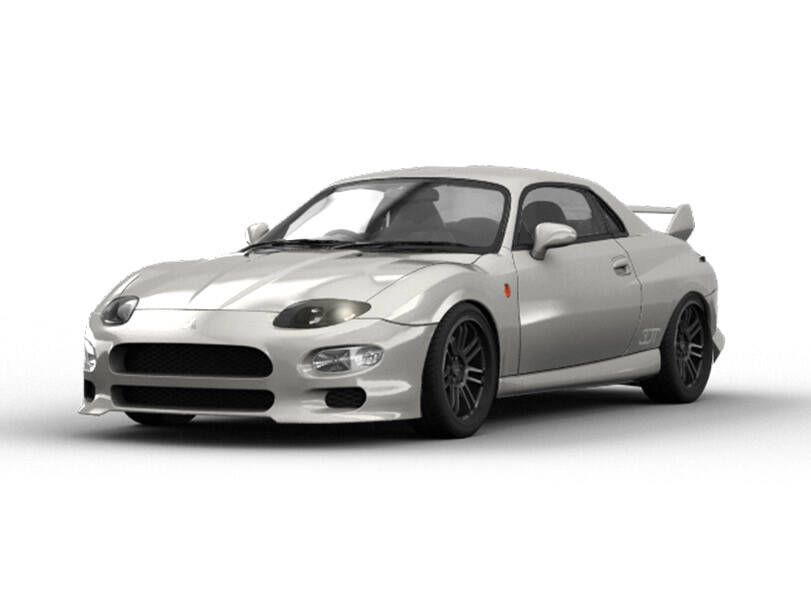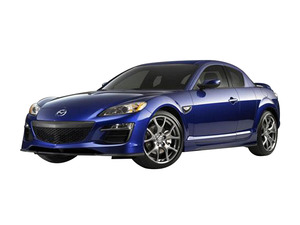The Mitsubishi FTO was a sports coupe produced by Mitsubishi Motors from 1994 to 2000. The FTO name stood for "Fresh Touring Origination," reflecting its innovative approach to sporty and compact coupe design. It was built to cater to enthusiasts looking for a stylish and agile vehicle with a focus on performance and driving dynamics.
The car debuted in Japan and quickly gained popularity due to its sleek design and advanced technology. It was available exclusively in a front-wheel-drive configuration, and its lightweight chassis contributed to an engaging driving experience. The FTO won the prestigious Japanese Car of the Year award in 1994-1995, solidifying its place as a beloved sports car of the 1990s.
The Mitsubishi FTO was discontinued in 2000 due to declining sales and stricter emissions regulations. However, it remains a popular choice among car enthusiasts worldwide, especially in markets where JDM vehicles are highly sought after.
Mitsubishi FTO Specifications
The Mitsubishi FTO was offered with multiple engine options, ranging from an entry-level inline-4 to high-performance V6 variants. The base 1.8L inline-4 engine produced 123 hp and 159 Nm of torque, offering a balance of efficiency and performance. The mid-range 2.0L V6 SOHC variant delivered 170 PS ( 167 hp) and 186 Nm of torque, providing an engaging driving experience with smooth acceleration.
For performance enthusiasts, the top-tier 2.0L V6 MIVEC engine was the most desirable option, producing 197 hp and 200 Nm of torque. This engine featured Mitsubishi's variable valve timing technology, MIVEC, which enhanced both power and fuel efficiency.
All models came with either a 5-speed manual transmission or a 4-speed INVECS-II automatic transmission, which featured adaptive shift control to optimize performance based on driving style.
The Mitsubishi FTO's lightweight body and well-tuned suspension system contributed to its agile handling. The car's MacPherson strut front suspension and multi-link rear suspension provided stability at high speeds and responsive cornering, making it a favorite among driving enthusiasts.
Mitsubishi FTO Interior
The Mitsubishi FTO interior was designed to offer a driver-focused cabin with sporty elements. The dashboard layout was simple yet functional, with easily accessible controls and an instrument cluster featuring a tachometer, speedometer, and digital odometer.
Seating in the FTO was low-slung and supportive, designed to hold passengers firmly during spirited driving. The standard cloth upholstery could be upgraded to leather seats in higher trims, enhancing comfort and premium appeal. The cabin space was adequate for a coupe, with two front sports seats and a small rear bench, making it ideal for two passengers and occasional rear-seat use.
An air conditioner was available, along with power windows, power mirrors, and power steering. While it lacked modern infotainment systems, the car offered two speakers, offering decent sound quality for its time.
Infotainment
Since the Mitsubishi FTO was developed in the mid-1990s, it did not feature modern infotainment systems like touchscreen displays or smartphone connectivity. However, it came equipped with 2 speakers, providing basic entertainment for drivers and passengers.
Owners of the FTO often upgrade the stereo system with aftermarket units to integrate modern features like Bluetooth connectivity, GPS navigation, and USB support.
Mitsubishi FTO Exterior
The Mitsubishi FTO's exterior design was inspired by aerodynamics and performance-oriented styling. Its sleek, low-profile stance and aggressive front end gave it a distinctive look. The headlights featured a quad-lamp design, enhancing visibility and complementing the car's sporty appeal.
The body lines were smooth and well-integrated, with flared wheel arches giving the car a planted stance. The car came equipped with 15-inch alloy wheels.
Color options included vibrant shades such as Pyrenees Black, Scotia White, Passion Red, and Dandelion Yellow, contributing to its bold and youthful image.
Mitsubishi FTO Safety Features
For its time, the Mitsubishi FTO was equipped with basic safety features. It included dual front airbags for driver and passenger protection. The ABS (Anti-lock Braking System) was available, improving braking stability during emergency stops.
However, due to the era in which it was manufactured, it lacked modern driver-assistance technologies such as lane departure warning or adaptive cruise control.
Mitsubishi FTO Mileage
Mitsubishi FTO offers a mileage in the range of 10-12 km/l with a fuel tank capacity of 60l. However, the mileage can vary depending on certain factors like fuel type, driving habits, and road conditions.
Mitsubishi FTO Price In Pakistan In 2025
According to the updates, Mitsubishi FTO price in Pakistan in 2025 is 50.0 lacs. As the Mitsubishi FTO is a discontinued model, it is available in Pakistan only through used car import platforms. Prices vary depending on condition, mileage, engine variant, and modifications.
Therefore, buyers must check import regulations and auction listings to find a suitable model.
Maintenance Tips for the Mitsubishi FTO
The maintenance tips for Mitsubishi FTO are as follows.
-
Regular Oil Changes: Use high-quality engine oil and replace it every 5,000 km to maintain performance.
-
Timing Belt Replacement: Ensure timely belt changes to prevent engine damage.
-
Brake System Check: Inspect brake pads and fluid regularly for optimal braking performance.
-
Cooling System Maintenance: Flush the radiator periodically to prevent overheating.
-
Suspension and Alignment: Check for worn-out shocks and ensure proper wheel alignment.
-
Transmission Fluid Change: Replace automatic or manual transmission fluid at recommended intervals.
-
Electrical System Check: Inspect wiring and battery condition to avoid electrical failures.
Comparison with Competitors
The Mitsubishi FTO primarily competed with Honda Prelude, Toyota Celica, and Nissan Silvia in the 1990s. Compared to the Honda Prelude, the FTO had a more compact design and a front-wheel-drive layout, whereas the Prelude featured four-wheel steering in some models.
When compared to the Toyota Celica, the FTO's V6 engine offered better power output, but the Celica's later models had a more advanced all-wheel-drive variant. Compared to the Nissan Silvia, the FTO lacked a rear-wheel-drive configuration, which made the Silvia more popular among drift enthusiasts.
Is Mitsubishi FTO Worth Buying?
The Mitsubishi FTO is a compact sports coupe that delivers an engaging driving experience, sharp handling, and a stylish design. Its 2.0-liter V6 MIVEC engine produces 197 horsepower, paired with either a 5-speed manual or a 4-speed automatic transmission. The FTO offers a lightweight chassis and a well-balanced suspension setup, making it a fun and agile car to drive.
If you're an enthusiast looking for a JDM classic with strong performance and a unique design, the Mitsubishi FTO is definitely worth considering.
More







